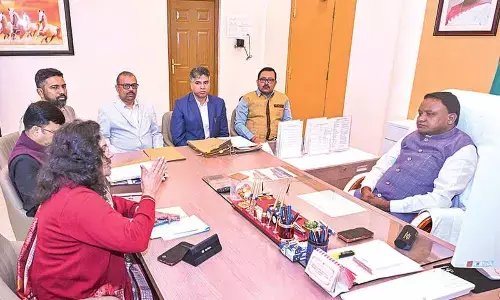Big data can help forecast future of Earth’s flora

Taking advantage of big data massive, openaccess information resources in research can help forecast how plant life will fare on an increasingly humandominated planet
Taking advantage of 'big data' - massive, open-access information resources in research - can help forecast how plant life will fare on an increasingly human-dominated planet.
Researchers from the Florida Museum of Natural History in the US issued a "call to action" to use big data to tackle longstanding questions about plant diversity and evolution. In a commentary published in the journal Nature Plants, scientists urged their colleagues to take advantage of massive, open-access data resources in their research and help grow these resources by filling in remaining data gaps.
"Using big data to address major biodiversity issues at the global scale has enormous practical implications, ranging from conservation efforts to predicting and buffering the impacts of climate change," said Doug Soltis, a Florida Museum curator.
"The links between big data resources we see now were unimaginable just a decade ago. The time is ripe to leverage these tools and applications, not just for plants but for all groups of organisms," said Soltis, a distinguished professor in the University of Florida. Over several centuries, natural history museums have built collections of billions of specimens and their associated data, much of which is now available online.
New technologies such as remote sensors and drones allow scientists to monitor plants and animals and transmit data in real time. Citizen scientists are contributing biological data by recording and reporting their observations via digital tools such as iNaturalist. Together, these data resources provide scientists and conservationists with a wealth of information about the past, present and future of life on Earth.
As these databases have grown, so have the computational tools needed not only to analyze but also link immense data sets. Studies that previously focused on a handful of species or a single plant community can now expand to a global level, thanks to the development of databases such as GenBank, which stores DNA sequences, and the Global Biodiversity Information Facility, a repository of species' location information.
These resources can be valuable to a wide range of users, from scientists in pursuit of fundamental insights into plant evolution and ecology to land managers and policymakers looking to identify the regions most in need of conservation, said Julie Allen, an assistant professor in the University of Nevada-Reno. If Earth's plant life were a medical patient, small-scale studies might examine the plant equivalent of a cold sore or an ingrown toenail.
With big data, scientists can gain a clearer understanding of global plant health as a whole, make timely diagnoses and prescribe the right treatment plans. "We're in this exciting and terrifying time in which the unprecedented amount of data available to us intersects with global threats to biodiversity such as habitat loss and climate change," said Allen, a former Florida Museum postdoctoral researcher.
"Understanding the processes that have shaped our world - how plants are doing, where they are now and why - can help us get a handle on how they might respond to future changes," he said.
















